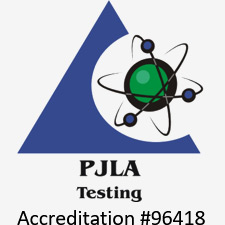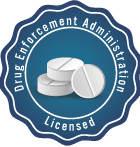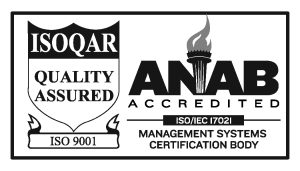Extractables and leachables (E&L) testing examines how materials can release substances that migrate into drugs, devices, or packaged goods. It identifies which compounds might transfer from plastics, rubbers, or coatings over time. Some are expected. Others are not. The value of extractables and leachables testing lies in knowing the difference before a product reaches the market. When the process is overlooked or handled poorly, the risks are rarely obvious until it is too late. To get reliable results, it helps to understand where mistakes tend to happen and how to avoid them.
1. Failing to Fully Characterize Materials Before Testing
Project teams involved in development, quality, and regulatory compliance may sometimes initiate extractables and leachables testing without complete material information. Material systems are often selected and evaluated without fully accounting for their chemical makeup. Base polymers, processing aids, stabilizers, and residual monomers all contribute to potential migration, yet many of these components remain undocumented at the outset. That gap leaves analysts without a baseline and reduces regulatory confidence in the findings.
Impact:
Unidentified extractables are difficult to assess in the absence of a defined material composition. Any compound that emerges during analysis may be a contaminant, an unlisted additive, or the result of degradation. A partial understanding of the material system can make the results appear speculative, delaying approvals or prompting the need for additional studies.
How to avoid it:
- Characterize material identity and thermal properties using FTIR, TGA, and DSC.
- Request full formulation disclosures from suppliers, including additives and process modifiers.
- Maintain a complete inventory of all product-contact materials, from primary containers to coatings and seals.
2. Using Analytical Methods That Aren’t Optimized for Extractables and Leachables Testing
Some laboratories rely on legacy methods, like HPLC with UV detection or basic GC setups, originally designed for quality control, stability testing, or release assays rather than approaches tailored specifically to extractables and leachables. Such workflows may lack the sensitivity needed to detect trace compounds or may not be validated for the product matrix. They also tend to favor a limited set of compound types, overlooking those outside standard detection windows.
Impact:
Inadequate method design can result in missed low-level leachables, false positives from matrix interference, or the misclassification of compound families. These shortcomings compromise the integrity of the data and make toxicological interpretation more difficult, increasing the risk of regulatory pushback or follow-up requests.
How to avoid it:
- Validate analytical methods with the specific matrix in mind, ensuring appropriate sensitivity and selectivity.
- Combine orthogonal techniques like GC-MS, LC-MS, and ICP-MS to capture a wider range of chemical species.
- Define the AET early in the process and confirm that detection limits consistently meet or exceed the threshold.
3. Leaving Compounds Over the Analytical Evaluation Threshold Unidentified
Unknown peaks detected above the Analytical Evaluation Threshold (AET) present a critical challenge in extractables and leachables studies. Failing to identify these compounds due to analytical complexity or time constraints forms gaps that prevent a comprehensive safety assessment. Proper toxicological evaluation depends on understanding the chemical structure of every compound exceeding the AET.
Impact:
Regulatory authorities expect the full identification of all compounds above the AET to enable an accurate assessment of potential risks. Unidentified compounds raise safety and compliance concerns that can delay regulatory approval and trigger demands for further testing. The resulting setbacks often extend development timelines and increase overall costs.
How to avoid it:
- Prioritize identifying the structure of every unknown compound above the AET.
- Employ advanced techniques such as high-resolution mass spectrometry, tandem mass spectrometry, and nuclear magnetic resonance spectroscopy to determine molecular structures.
- Consult spectral libraries and fragmentation databases to facilitate efficient and accurate compound identification.
4. Submitting Weak or Incomplete Toxicological Risk Assessments
In extractables and leachables testing, the toxicological risk assessment is the key step that translates chemical findings into safety decisions. A common mistake is treating this evaluation as a routine exercise rather than a detailed, compound-specific analysis. Such errors frequently occur when toxicology is delegated late in development or performed without the specialized knowledge required for handling the complexity of extractables and leachables data.
Impact:
Failing to deliver a thorough and tailored toxicological assessment undermines the entire extractables and leachables testing effort. Regulatory agencies rely on this assessment to determine whether detected compounds pose real risks. Weak or incomplete evaluations can lead to overestimating hazards, triggering unnecessary regulatory actions, or underestimating dangers, putting patient safety at risk. Both outcomes may cause costly delays, additional testing, and the potential rejection of submissions.
How to avoid it:
- Integrate toxicological expertise early and maintain close collaboration throughout extractables and leachables testing and data interpretation.
- Rely on established frameworks like the Threshold of Toxicological Concern (TTC), Permitted Daily Exposure (PDE), and the Cramer Classification to guide evaluations.
- Provide clear, detailed documentation linking chemical analysis to toxicological conclusions for every compound of concern.
Receive Quality Extractables and Leachables Testing Insights From Jordi Labs
Effective extractables and leachables testing necessitates a comprehensive approach that integrates early material characterization, tailored analytical methods, the thorough identification of compounds, and rigorous toxicological risk assessments. Avoiding common pitfalls safeguards product development timelines and regulatory compliance. Jordi Labs is dedicated to delivering expert extractables and leachables testing services that provide clear, reliable data and actionable insights. Contact Jordi Labs to discover how our specialized extractables and leachables testing can support your product development and quality assurance goals.





